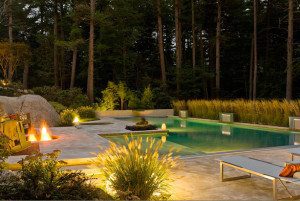The Love of His Life: Malcolm Wright
October 10, 2016
Decades of creating functional and abstract works in clay haven’t dimmed the enthusiasm world-renowned Vermont potter Malcolm Wright has for his craft.
Text by Robert Kiener
Artist Malcolm Wright
At the end of a meandering dirt road in the backwoods of southern Vermont, in a white-walled, oak-floored second-floor gallery above a post-and-beam studio, Malcolm Wright, surrounded by scores of pieces of his pottery—a virtual retrospective of his life’s work—reveals what he calls his “big secret.”
As he describes how he crafted one of his more abstract pieces, Wright pauses, then confesses, “There should be a law. No one should have this much fun. It’s so wonderful to come out here every morning and have no idea what I am going to make.”
By the glint in his eye it’s clear that the seventy-seven-year-old Wright has lost none of the fascination with clay and its limitless possibilities that have been the hallmarks of his award-winning work. His wood-fired glazed pottery—from traditional stoneware to Japanese-inspired Karatsu functional bowls, plates, and vases to his more recent abstract sculptural work—is highly sought after and is included in collections as varied as the Corcoran Gallery of Art in Washington, D.C., Tokyo’s Idemitsu Museum of Arts, and Boston’s Museum of Fine Arts. He’s often been called an American master, and as one art critic noted, “His ceramic sculpture and vessels are alive with monumental presence.”
Examining Wright’s lifetime of work, it is clear that much of it has been influenced by the eight years he studied under Japanese teachers in the 1960s, including three years he spent with his wife, Marjorie, in Kyoto and Karatsu as an apprentice under the twelfth-generation Karatsu master potter and Japanese Living National Treasure Taroemon Nakazato. As he explains, “For years my work reflected my deep involvement with Japan, functional pottery for food and flowers in the ascetic, restrained taste of tea ceremony pottery.”
While much of his work has its roots in Japan, he has branched out as he has explored, and returned to, earlier Western modernist influences such as cubism, abstract expressionism, and constructivism. “The older I got the more I ‘went off the rails’ in crazy directions as I experimented,” he explains with a broad smile as he shows off an elegant, sinuous sculptural piece made (“assembled and reassembled,” as he says) from extruded tubes of clay. “In addition to my Japanese-influenced, functional pieces, which I have continued to produce, I’ve also done these more sculptural, abstract pieces,” he says. “The earliest ones were geometric, with hard edges and smooth surfaces, but I then began producing looser, even more abstract forms.”
Wright explains that much of his free-form, sculptural work is a product of his intuition. “They are all about solving problems and making discoveries,” he says. “Each piece also reflects how you feel about life that day.”
He has also worked in bronze. “It has a feeling of permanence, which I am attracted to,” says Wright.
Both his traditional glazed stoneware and abstract pieces have one characteristic in common: surprise. “Pottery is unpredictable. You never know how a piece will turn out until you take it out of the kiln,” he says.
Too high, or too low, a temperature in the kiln can affect coloration. An unevenly applied slip may blister or peel. “I have a partnership with fire and my kiln,” says Wright. “I’ve learned to give up control like one does with one’s children and am open to a sense of wonder when I open up the kiln.”
He fires his work, made from Georgia red brick clay, stoneware, and porcelain, in a kiln he built in the 1970s after returning from Japan. The multi-chambered kiln, based on an ancient Korean style called split bamboo, is twenty-one feet long and six feet wide and can hold hundreds of pieces. It takes several days to fire it up to the necessary temperature of 2,000 to 2,500 degrees Fahrenheit.
In recent years, Wright has cut back on his production, but not his art. Moving from the potter’s wheel, which he describes as “fluid, quick, and free,” to the more free-form, abstract hand-building keeps him drawn to all the possibilities of clay. “I never get tired of the search,” he says. “I am always searching for what the clay wants to become.” •
editor’s note: To see more of Malcolm Wright’s work, visit theturnpikeroad.com
Share
![NEH-Logo_Black[1] NEH-Logo_Black[1]](https://b2915716.smushcdn.com/2915716/wp-content/uploads/2022/08/NEH-Logo_Black1-300x162.jpg?lossy=1&strip=1&webp=1)















You must be logged in to post a comment.